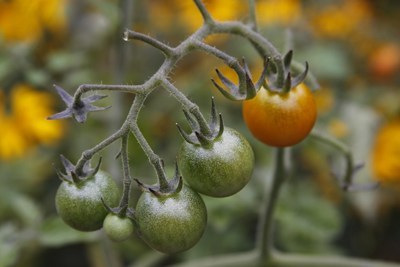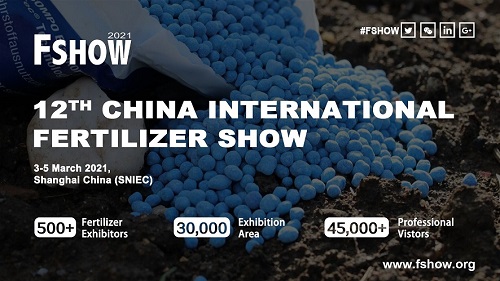
Exhibition time: 17-19 March, 2026 Shanghai, China
 中文
中文

Exhibition time: 17-19 March, 2026 Shanghai, China
 中文
中文
Did you ever wonder where plants get their nutrients? It’s from the soil that they are grown in! Tiny seeds planted by farmers and gardeners grow into plants that can produce grain in a farmer’s field or several juicy tomatoes from your yard. The soil that seed is planted in plays a big part in the health of the plant, and of the crop that comes from it.

Plants – and the crops they grow – get their nutrients from the soil they grow in.
Crops grown in nutrient-rich soil have higher nutrient content.
Healthy plants need elements obtained from the soil to live well. As an example, humans need iron in our bodies to make healthy blood. Plants also need iron to function correctly. Elements that are irreplaceable to the plant are called essential nutrients. This means that without these elements a plant cannot grow, reproduce, or complete its life cycle. Besides iron, some other examples of elements essential for healthy plant growth are nitrogen, sulfur, phosphorus, sodium, and potassium. Even metals like copper and zinc are important plant nutrients.
Soil nutrients come from various natural sources. Rocks can provide essential minerals like calcium. Decayed organic matter can provide nitrogen, carbon, and other materials. But in gardens and farms, nutrients are often removed by plants faster than nature can replenish them. This can lead to a low soil fertility–and plant diseases and nutrient deficiencies. And it can affect the quality of the crop being grown in that soil. Let’s give an example.
Have you heard of osteoporosis? Women, especially, can get this disease that affects bones. Without enough vitamin D and calcium, their bones lose density. This can lead to fractures and other serious illnesses. But osteoporosis is a disease that you can’t diagnose or see just by looking at a person. On the outside, a person with osteoporosis looks fine.

These cherry tomatoes will contain the best nutrients when grown in healthy, nutrient-rich soil.
In the same way, if plants are growing in nutrient-deficient soils, they can be “sickly” and yet look fine. Let’s say you plant two tomato plants of the same variety. One tomato plant goes into a robust, nutrient-rich soil in one area of your garden. In another area of your garden, you forgot to add compost last fall or didn’t add fertilizer. That soil is nutrient-deficient but looks fine to your eyes. You plant your second tomato there. Both plants yield red, juicy tomatoes that taste the same. But the tomatoes–if tested for nutrients–would be different. The one grown in the healthy soil will have more nutrients for you to consume than one grown in a poor soil. But you cannot tell that just by looking at the tomatoes! It’s also quite likely that your garden will yield fewer tomatoes from the plant grown in nutrient-deficient soil.
Farmers face the same problems. They need to plant crops each year–to feed the world, to create income for their farm. They have many practices to use that improve the soil, but often they need to use fertilizer as an amendment.
Fertilizer is simply something you add to the soil to provide nutrients in order to help plants grow well. Historically, many civilizations have applied some type of substance to fertilize their plants and improve productivity. For example, there is evidence that the Romans and Babylonians applied wood ash to their fields as fertilizer.
Today, fertilizers are classified as inorganic or organic. Inorganic fertilizers are produced in a variety of ways. They don’t usually contain any carbon besides the compound urea. Inorganic fertilizers can provide single or multiple nutrients at a time. You might be familiar with these from a garden store. Usually one picks a fertilizer based on the nitrogen (N), phosphorus (P), and potassium (K) ratios. The nitrogen in inorganic fertilizers comes from the atmosphere, while phosphorus and potassium come from mined mineral deposits.
Organic fertilizers are produced from the recycling of plant or animal-derived matter and contain carbon. (In the science world, chemicals containing carbon are referred to as “organic”–which is not the same term as “organic food” found in the grocery store! In our post, we are referring to the scientific term of organic.) Compost, manure, and other materials are classified as organic fertilizers. The wood ash used by the Romans is considered an organic fertilizer, and loosely related to today’s biochar.
The most common fertilizer used is nitrogen-based, inorganic fertilizer, as plants require a lot of nitrogen to grow healthy and give good yields. Growers – and gardeners – need to be careful about their use of nitrogen fertilizers. It’s always best to test your home garden soil before adding any nutrients. This is easily done with a kit through your County Extension agency. The environmental impact of applying too much inorganic fertilizer includes water pollution, acidification of soil, accumulation of toxic chemicals in the soil, and increase in the release of the greenhouse gases nitrous oxide and methane to the air.
However, without the use of fertilizers – whether organic or inorganic – we cannot currently feed the world’s population. It is estimated that at least 30-50% of crop yields globally are attributable to fertilizer application.This makes fertilizers a key ingredient for maintaining food production to meet global population growth. Agronomists continue to develop better management practices to grow enough nutritious, affordable food while protecting the environment.
